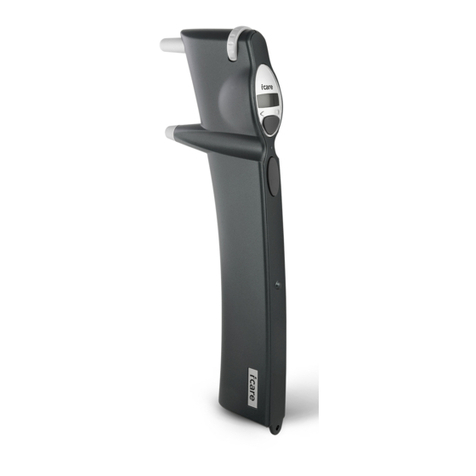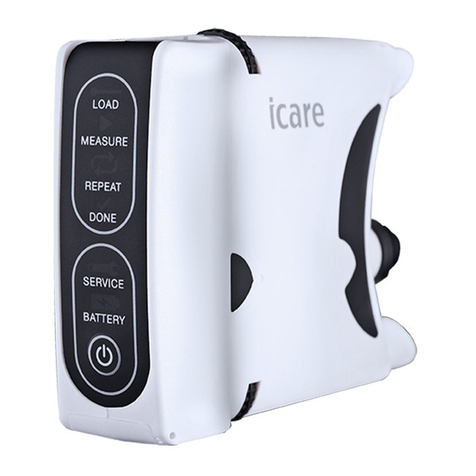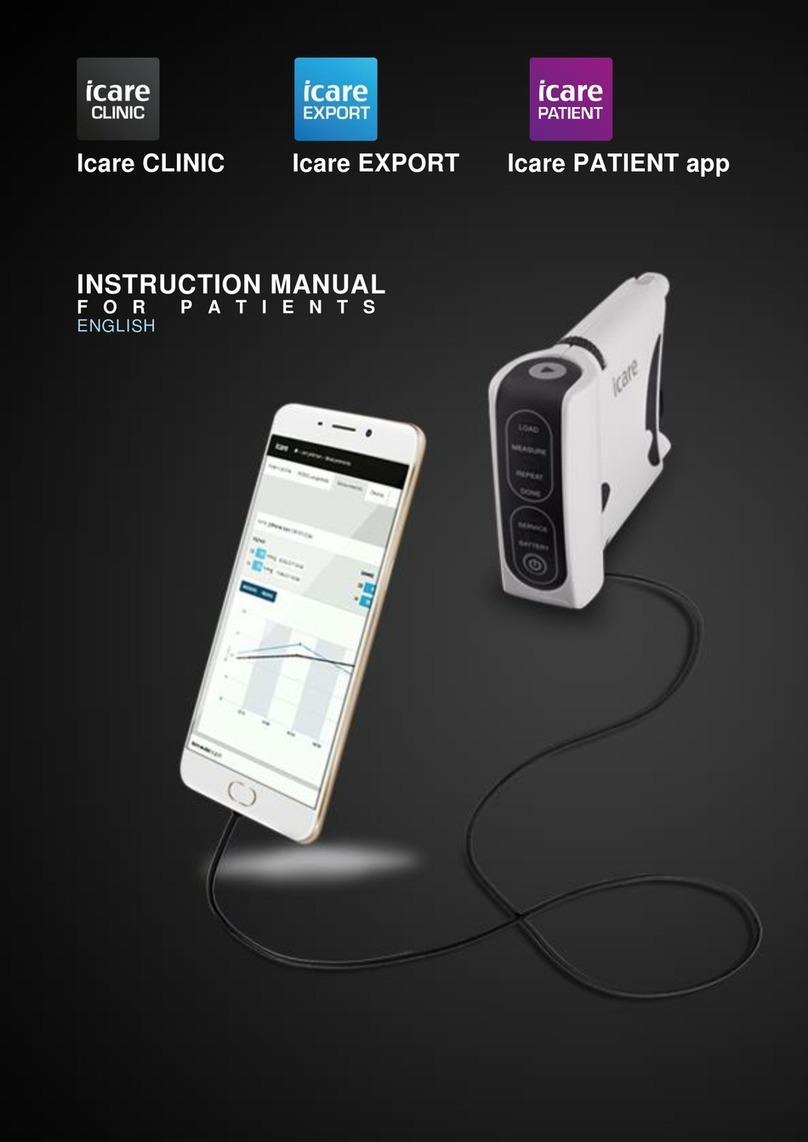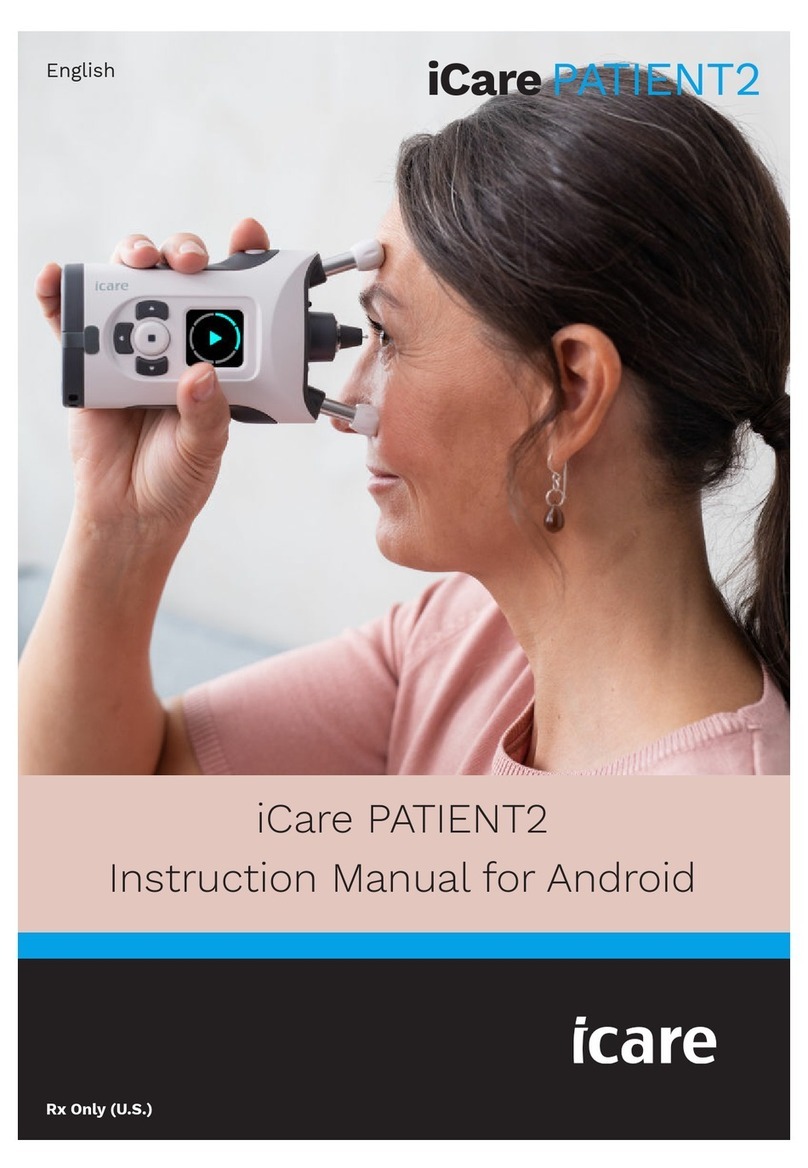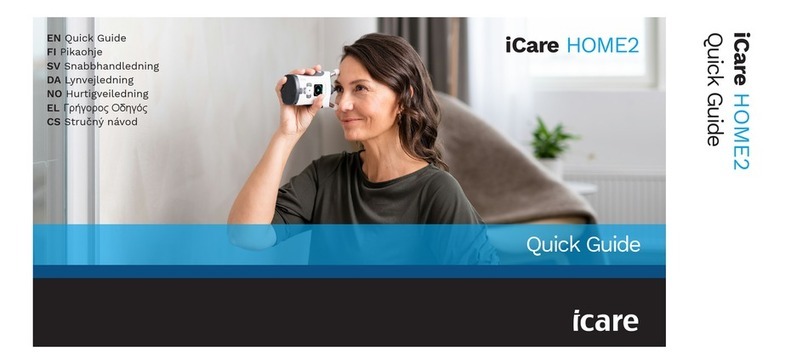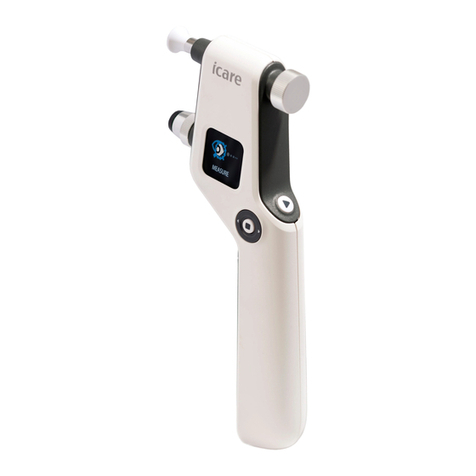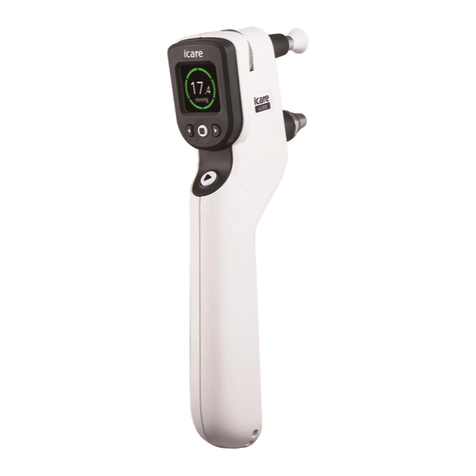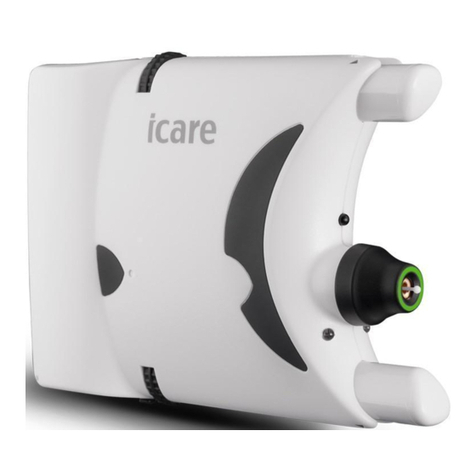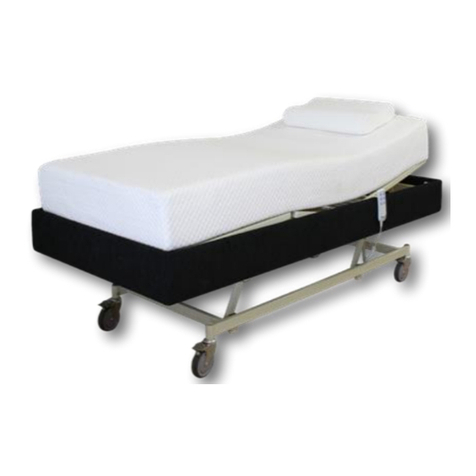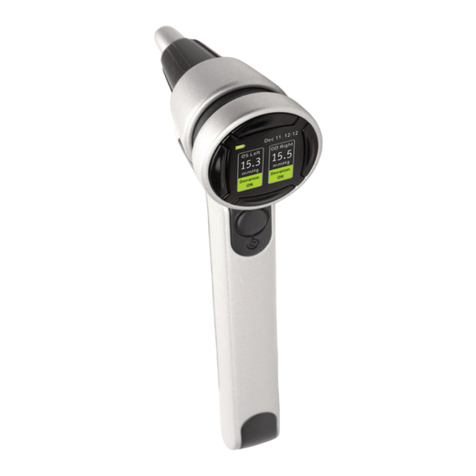Icare®HOME (Model: TA022) INSTRUCTION MANUAL TA022-036 EN-3.2
Icare®HOME (Model: TA022) INSTRUCTION MANUAL TA022-036 USA-2.0
The information in this document is subject to change without prior notice.
In a conict situation the English version prevails.
This device complies with:
Medical Device Directive 93/42/EEC
Canadian Medical Device Regulations
Copyright © 2017 Icare Finland Oy, Made in Finland
0044
TABLE OF CONTENTS
1. Safety instructions ............................................................................................ 3
2. Indications for use............................................................................................. 6
3. Contradictions ................................................................................................... 6
4. Warning .............................................................................................................. 6
5. Precaution .......................................................................................................... 6
6. Introduction ....................................................................................................... 7
7. Package contents .............................................................................................. 7
8. Before you start................................................................................................. 6
9. Setting up the tonometer................................................................................. 9
9.1 Installing or changing the battery ....................................................................9
9.2 Turning the tonometer on ...............................................................................9
9.3 Loading the probe............................................................................................10
10. Using the tonometer....................................................................................... 12
10.1 Choosing the measurement mode................................................................12
10.2 Adjusting the measurement position............................................................13
10.3 Automatic eye recognition..............................................................................14
10.4 Taking the measurements ..............................................................................15
11. Reading the measurement data.................................................................... 17
12. Troubleshooting............................................................................................... 18
14. Cleaning the probe base ................................................................................. 20
15. Cleaning the disinfection................................................................................ 20
16. Accessories ....................................................................................................... 21
17. Lifetime ............................................................................................................ 21
18. Technical and performance data................................................................... 21
18.1 Clinical performance data...............................................................................22
19. Symbols ............................................................................................................ 29
20. Electromagnetic declaration.......................................................................... 30
Appendix 1. Icare home tonometer training procedures for certication of
health care providers (HCP) ............................................................ 34
Appendix 2. Icare home tonometer training procedures for certication of
the patient for self-use .................................................................... 38
Icare Finland Oy
Äyritie 22, FI-01510 Vantaa, Finland
Tel. +358 9 8775 1150, Fax +358 9 728 6670
www.icaretonometer.com, info@icarenland.com
